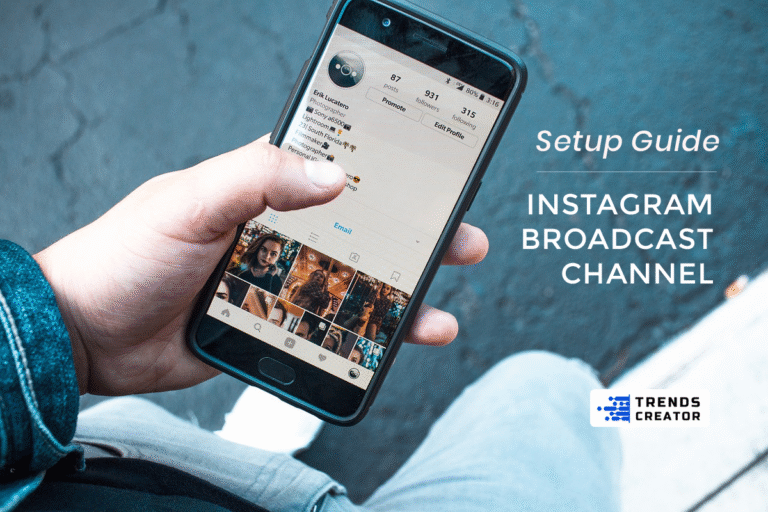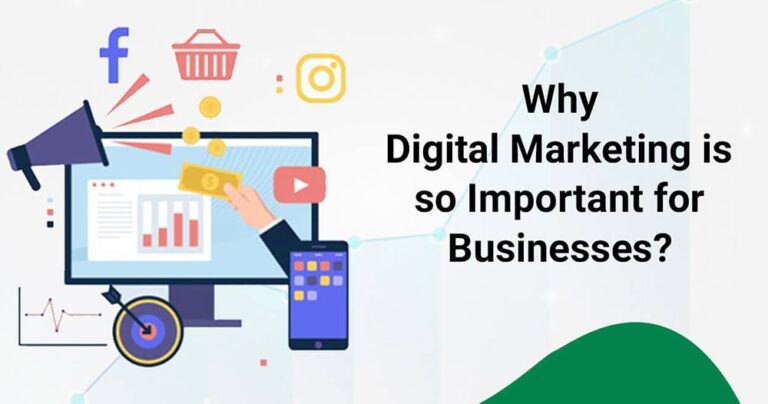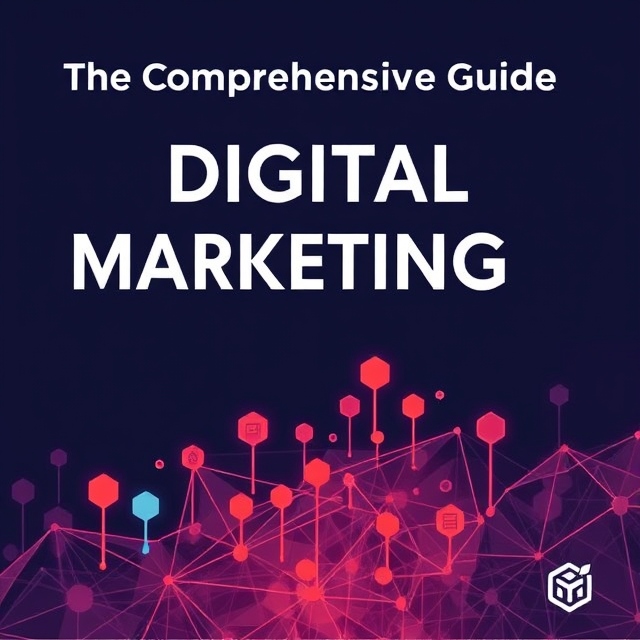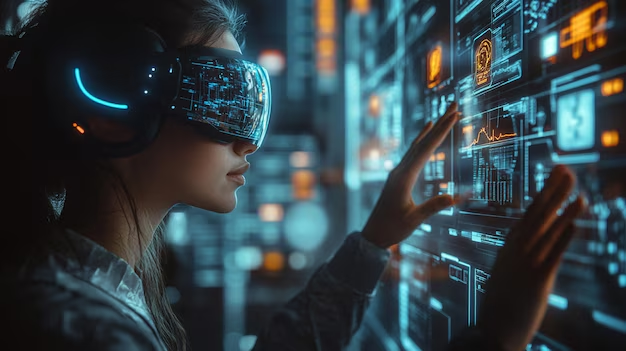In today’s fast-paced digital world, technology is constantly evolving, influencing every aspect of our daily lives, including how businesses interact with consumers. Digital marketing, which encompasses everything from search engine optimization (SEO) to social media marketing, has become a crucial component of any business strategy. With the advent of new technologies, digital marketers now have access to more powerful tools, enabling them to create more personalized, efficient, and effective campaigns. This article explores the latest technologies revolutionizing digital marketing, helping brands enhance their customer experiences, drive sales, and gain a competitive edge.
1. Artificial Intelligence and Machine Learning
The Power of AI and ML in Digital Marketing
Artificial intelligence (AI) and machine learning (ML) have become game-changers in the digital marketing world. These technologies allow marketers to analyze vast amounts of data in real time, making it possible to understand customer behavior, predict future trends, and optimize campaigns for better performance.
Personalization at Scale
AI and ML can deliver highly personalized customer experiences by processing and analyzing consumer data. Marketers can use AI-powered algorithms to create tailored content, recommend products, and even offer personalized email campaigns based on customer preferences, browsing history, and purchase behavior. This level of personalization increases the chances of conversions and fosters customer loyalty.
Chatbots and Customer Service Automation
Chatbots, powered by AI, have transformed the way businesses handle customer service. By automating responses to common queries and providing 24/7 support, chatbots help brands engage with customers in real time, enhancing user experience while reducing the need for human intervention. AI chatbots are capable of understanding natural language, learning from past interactions, and even solving complex problems. Brands like H&M, Sephora, and Domino’s have successfully incorporated AI chatbots into their marketing strategies, leading to higher customer satisfaction.
Predictive Analytics
AI-driven predictive analytics is another area where digital marketers are benefiting. Predictive models can forecast customer behaviors, such as the likelihood of making a purchase or churning. This enables brands to target customers at the right time with the right offers, improving conversion rates. For example, Netflix uses predictive analytics to recommend movies and shows based on viewing history, which keeps users engaged and increases time spent on the platform.
Example:
Amazon uses AI and ML to recommend products to its customers, not just based on their browsing history but also by considering similar customers’ preferences. This “suggested for you” feature has become a key part of its marketing strategy, driving higher sales.
2. Voice Search Optimization
The Rise of Voice Assistants
With the increasing use of voice assistants such as Amazon’s Alexa, Google Assistant, and Apple’s Siri, voice search is emerging as a dominant form of search behavior. According to research, nearly 55% of households are expected to own a smart speaker by 2022, signaling the growing importance of voice search in digital marketing.
Voice search differs from traditional text-based search because it tends to be more conversational. Users speak naturally, using longer queries like, “What are the best restaurants near me?” or “How can I improve my SEO rankings?” Marketers must adapt their strategies to optimize for these types of searches, which often include long-tail keywords and natural language.
Implications for SEO
Voice search optimization requires a shift in SEO strategies. Marketers must focus on creating content that answers specific questions and provides direct, concise information. Featured snippets, which provide quick answers to queries on Google, are now more important than ever as they are often the answers read aloud by voice assistants.
Local SEO
Voice search is particularly relevant for local businesses. Studies show that 58% of consumers have used voice search to find local business information, such as store hours, location, or product availability. Local businesses can take advantage of this trend by ensuring their Google My Business listing is up to date and optimizing their websites for voice search queries.
Example:
Domino’s Pizza has embraced voice search by allowing customers to order pizza through Amazon Alexa. This innovative integration not only makes it easier for customers to place orders but also provides Domino’s with valuable data about their customers’ preferences and behaviors.
3. Augmented Reality (AR) and Virtual Reality (VR)
AR and VR in Digital Marketing
Augmented reality (AR) and virtual reality (VR) are becoming increasingly important tools for digital marketers. These technologies offer immersive experiences that can significantly enhance consumer engagement and provide unique opportunities for product marketing.
Virtual Try-Ons and Product Demos
AR enables consumers to visualize how products will look or fit before making a purchase. For example, cosmetics brands like L’Oréal use AR to allow customers to try on makeup virtually through their smartphones. Furniture retailers like IKEA have also adopted AR to let customers visualize how furniture would look in their homes. This removes the uncertainty of online shopping and helps customers make more informed decisions.
Immersive Brand Experiences
VR, on the other hand, offers immersive brand experiences that can transport consumers to a virtual world. For instance, brands like Volvo have used VR to give customers a virtual test drive of their cars. Similarly, real estate companies use VR to offer virtual tours of properties, providing potential buyers with an interactive experience that saves time and resources.
Example:
L’Oreal’s AR-based “Makeup Genius” app lets users try on makeup products using their smartphones. This has proven to be an innovative way to engage users and increase sales while allowing customers to experiment with products in a risk-free, virtual environment.
4. Blockchain Technology
Blockchain and Digital Marketing
Blockchain, the underlying technology behind cryptocurrencies like Bitcoin, is making its way into the digital marketing world. This distributed ledger technology offers transparency, security, and decentralization, which can address several challenges in digital marketing, such as data privacy, fraud prevention, and supply chain transparency.
Enhanced Data Privacy
With increasing concerns about data privacy, blockchain offers a solution by providing users with more control over their personal information. Blockchain’s transparent and immutable nature ensures that data can be securely stored and transferred without the risk of manipulation. This could change the way marketers collect, store, and use consumer data.
Combatting Ad Fraud
Digital advertising has long been plagued by ad fraud, where marketers pay for fraudulent clicks, impressions, or engagements. Blockchain can help solve this problem by verifying the authenticity of digital interactions. This could lead to more accurate performance tracking and improved ROI for advertisers.
Example:
Brave, a web browser built on blockchain technology, allows users to block unwanted ads while earning cryptocurrency in exchange for opting into relevant ads. This innovative approach not only protects users’ privacy but also gives advertisers a more secure and transparent advertising platform.
5. 5G Technology
How 5G is Transforming Digital Marketing
The rollout of 5G networks is set to revolutionize digital marketing by offering faster speeds, lower latency, and better connectivity. This has profound implications for mobile marketing, video streaming, and interactive content.
Faster Load Times and Enhanced User Experience
With 5G’s increased bandwidth and speed, marketers can deliver content much faster, improving the user experience. Websites will load almost instantaneously, which reduces bounce rates and increases the likelihood of conversions. Marketers can also create more engaging content, such as high-quality videos, augmented reality (AR), and virtual reality (VR), without worrying about slow load times.
Real-Time Marketing
5G also enables real-time marketing in ways that were previously not possible. Brands can push personalized offers and updates to customers as they engage with products in stores or even in their homes. This can create more relevant, timely, and targeted marketing experiences that resonate with consumers.
Example:
With 5G, Nike could create an in-store experience where customers scan products with their smartphones and instantly access high-definition videos, personalized offers, and even AR-driven experiences without delays.
6. Programmatic Advertising
The Automation of Digital Ad Buying
Programmatic advertising involves the use of AI and automation to buy and place ads in real time, ensuring that advertisers reach the right audience at the right time with the right message. This eliminates the need for human intervention, reducing costs and improving efficiency.
Real-Time Bidding
Programmatic advertising uses real-time bidding (RTB) to place ads in front of users who are most likely to engage with them. By using machine learning algorithms, marketers can automatically adjust bids for ad placements based on factors like demographics, location, and browsing behavior.
Example:
A fashion retailer may use programmatic advertising to automatically place ads for its latest collection in front of users who have shown an interest in similar products. This targeted approach is far more efficient and effective than traditional methods.
Conclusion
Digital marketing has always been an ever-evolving field, but with the rise of these new technologies, the pace of change has accelerated. From AI and machine learning to blockchain and 5G, businesses now have an array of tools to enhance their marketing strategies, improve customer experiences, and drive sales. Marketers who embrace these technologies will be better equipped to stay competitive in a rapidly changing digital landscape, offering consumers more personalized, relevant, and efficient interactions with their brands. As we move forward, staying on top of these innovations will be essential for success in the digital marketing world.









